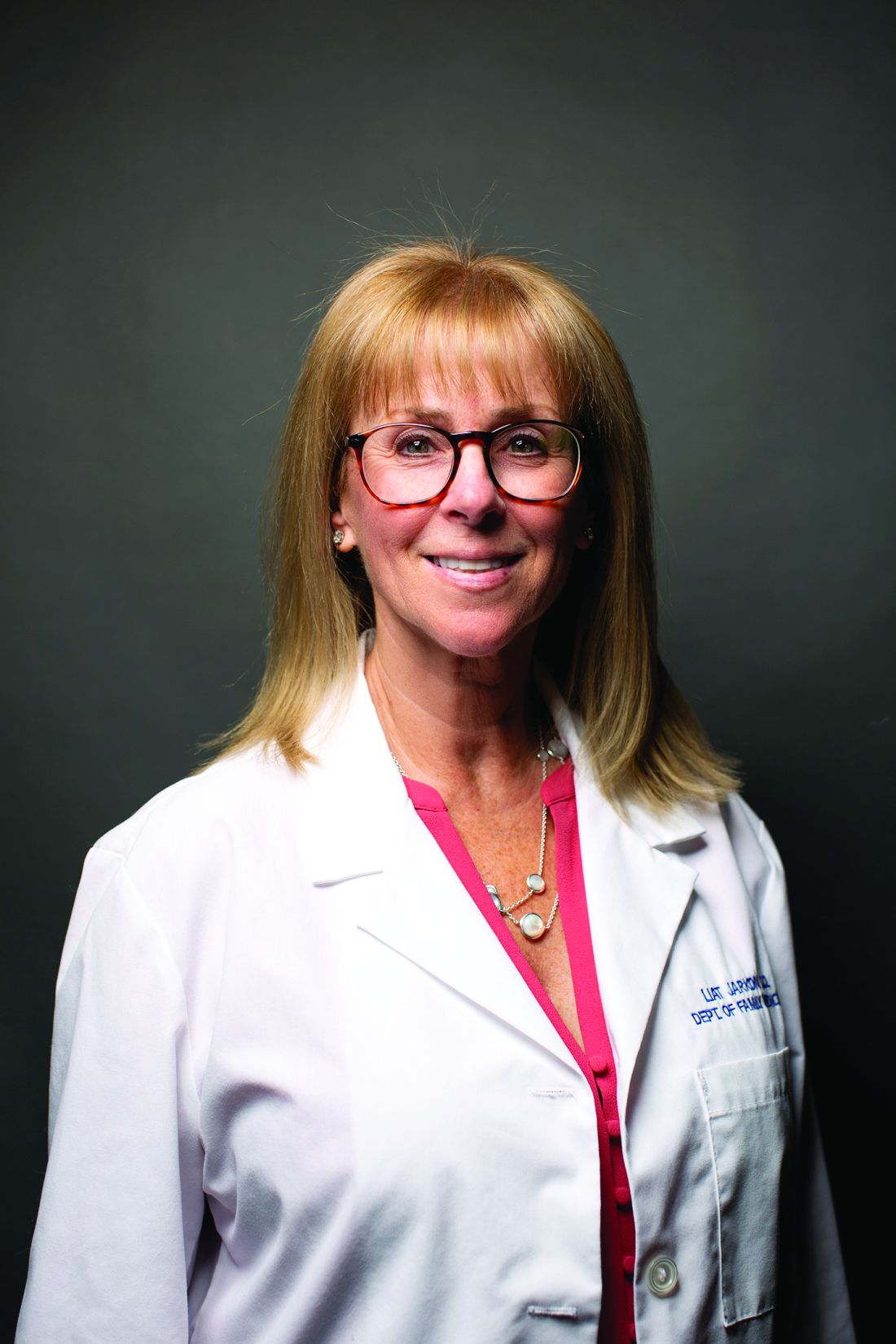User login
Mental illness has been waiting in the wings for years; ignored, ridiculed, minimized, and stigmatized. Those who succumbed to it tried to lend testimonials, but to no avail. Those who were spared its effects remained in disbelief. So, it stayed on the sidelines, growing in intensity and breadth, yet stifled by the masses, until 2 years ago.
In March 2020, when COVID-19 became a pandemic, the importance of mental health finally became undeniable. As the pandemic’s effects progressed and wreaked havoc on our nation, our mental illness rates simultaneously surged. This surge paralleled that of the COVID-19 pandemic’s and in fact, contributed to a secondary crisis, allowing mental health to finally be addressed and gain center stage status.
But “mental health” is not easily defined, as it takes on many forms and is expressed in a variety of ways and via a myriad of symptoms. It does not discriminate by gender, race, age, socioeconomic status, educational level, profession, religion, or geography. At times, mental health status is consistent but at other times it can fluctuate in intensity, duration, and expression. It can be difficult to manage, yet there are various treatment modalities that can be implemented to lessen the impact of mental illness. Stressful events seem to potentiate its manifestation and yet, there are times it seems to appear spontaneously, much as an uninvited guest.
Mental health has a strong synergistic relationship with physical health, as they are very interdependent and allow us to function at our best only when they are both operating optimally. It should come as no surprise then, that the COVID-19 pandemic contributed to the exponential surge of mental illnesses. Capitalizing on its nondiscriminatory nature, mental illness impacted a large segment of the population – both those suffering from COVID-19 as well as those treating them.
As the nation starts to heal from the immediate and lingering physical and emotional consequences of the COVID-19 pandemic, President Biden has chosen to address and try to meet the needs of the health care heroes, the healers. The signing of H.R. 1667, the Dr. Lorna Breen Health Care Provider Protection Act into law on March 18, 2022, showed dedication to the health care community that has given tirelessly to our nation during the COVID-19 pandemic, and is itself recuperating from that effort.
Taking a top-down approach is essential to assuring the health of the nation. If our healers are not healthy, physically and mentally, they will not be able treat those whom they are dedicated to helping. Openly discussing and acknowledging the mental health problems of health care workers as a community makes it okay to not be okay. It normalizes the need for health care workers to prioritize their own mental health. It can also start to ease the fear of professional backlash or repercussions for practicing self-care.
I, for one, am very grateful for the prioritizing and promoting of the importance of mental health and wellness amongst health care workers. This helps to reduce the stigma of mental illness, helps us understand its impact, and allows us to formulate strategies and solutions to address its effects. The time has come.
Dr. Jarkon is a psychiatrist and director of the Center for Behavioral Health at the New York Institute of Technology College of Osteopathic Medicine in Old Westbury, N.Y.
Mental illness has been waiting in the wings for years; ignored, ridiculed, minimized, and stigmatized. Those who succumbed to it tried to lend testimonials, but to no avail. Those who were spared its effects remained in disbelief. So, it stayed on the sidelines, growing in intensity and breadth, yet stifled by the masses, until 2 years ago.
In March 2020, when COVID-19 became a pandemic, the importance of mental health finally became undeniable. As the pandemic’s effects progressed and wreaked havoc on our nation, our mental illness rates simultaneously surged. This surge paralleled that of the COVID-19 pandemic’s and in fact, contributed to a secondary crisis, allowing mental health to finally be addressed and gain center stage status.
But “mental health” is not easily defined, as it takes on many forms and is expressed in a variety of ways and via a myriad of symptoms. It does not discriminate by gender, race, age, socioeconomic status, educational level, profession, religion, or geography. At times, mental health status is consistent but at other times it can fluctuate in intensity, duration, and expression. It can be difficult to manage, yet there are various treatment modalities that can be implemented to lessen the impact of mental illness. Stressful events seem to potentiate its manifestation and yet, there are times it seems to appear spontaneously, much as an uninvited guest.
Mental health has a strong synergistic relationship with physical health, as they are very interdependent and allow us to function at our best only when they are both operating optimally. It should come as no surprise then, that the COVID-19 pandemic contributed to the exponential surge of mental illnesses. Capitalizing on its nondiscriminatory nature, mental illness impacted a large segment of the population – both those suffering from COVID-19 as well as those treating them.
As the nation starts to heal from the immediate and lingering physical and emotional consequences of the COVID-19 pandemic, President Biden has chosen to address and try to meet the needs of the health care heroes, the healers. The signing of H.R. 1667, the Dr. Lorna Breen Health Care Provider Protection Act into law on March 18, 2022, showed dedication to the health care community that has given tirelessly to our nation during the COVID-19 pandemic, and is itself recuperating from that effort.
Taking a top-down approach is essential to assuring the health of the nation. If our healers are not healthy, physically and mentally, they will not be able treat those whom they are dedicated to helping. Openly discussing and acknowledging the mental health problems of health care workers as a community makes it okay to not be okay. It normalizes the need for health care workers to prioritize their own mental health. It can also start to ease the fear of professional backlash or repercussions for practicing self-care.
I, for one, am very grateful for the prioritizing and promoting of the importance of mental health and wellness amongst health care workers. This helps to reduce the stigma of mental illness, helps us understand its impact, and allows us to formulate strategies and solutions to address its effects. The time has come.
Dr. Jarkon is a psychiatrist and director of the Center for Behavioral Health at the New York Institute of Technology College of Osteopathic Medicine in Old Westbury, N.Y.
Mental illness has been waiting in the wings for years; ignored, ridiculed, minimized, and stigmatized. Those who succumbed to it tried to lend testimonials, but to no avail. Those who were spared its effects remained in disbelief. So, it stayed on the sidelines, growing in intensity and breadth, yet stifled by the masses, until 2 years ago.
In March 2020, when COVID-19 became a pandemic, the importance of mental health finally became undeniable. As the pandemic’s effects progressed and wreaked havoc on our nation, our mental illness rates simultaneously surged. This surge paralleled that of the COVID-19 pandemic’s and in fact, contributed to a secondary crisis, allowing mental health to finally be addressed and gain center stage status.
But “mental health” is not easily defined, as it takes on many forms and is expressed in a variety of ways and via a myriad of symptoms. It does not discriminate by gender, race, age, socioeconomic status, educational level, profession, religion, or geography. At times, mental health status is consistent but at other times it can fluctuate in intensity, duration, and expression. It can be difficult to manage, yet there are various treatment modalities that can be implemented to lessen the impact of mental illness. Stressful events seem to potentiate its manifestation and yet, there are times it seems to appear spontaneously, much as an uninvited guest.
Mental health has a strong synergistic relationship with physical health, as they are very interdependent and allow us to function at our best only when they are both operating optimally. It should come as no surprise then, that the COVID-19 pandemic contributed to the exponential surge of mental illnesses. Capitalizing on its nondiscriminatory nature, mental illness impacted a large segment of the population – both those suffering from COVID-19 as well as those treating them.
As the nation starts to heal from the immediate and lingering physical and emotional consequences of the COVID-19 pandemic, President Biden has chosen to address and try to meet the needs of the health care heroes, the healers. The signing of H.R. 1667, the Dr. Lorna Breen Health Care Provider Protection Act into law on March 18, 2022, showed dedication to the health care community that has given tirelessly to our nation during the COVID-19 pandemic, and is itself recuperating from that effort.
Taking a top-down approach is essential to assuring the health of the nation. If our healers are not healthy, physically and mentally, they will not be able treat those whom they are dedicated to helping. Openly discussing and acknowledging the mental health problems of health care workers as a community makes it okay to not be okay. It normalizes the need for health care workers to prioritize their own mental health. It can also start to ease the fear of professional backlash or repercussions for practicing self-care.
I, for one, am very grateful for the prioritizing and promoting of the importance of mental health and wellness amongst health care workers. This helps to reduce the stigma of mental illness, helps us understand its impact, and allows us to formulate strategies and solutions to address its effects. The time has come.
Dr. Jarkon is a psychiatrist and director of the Center for Behavioral Health at the New York Institute of Technology College of Osteopathic Medicine in Old Westbury, N.Y.

